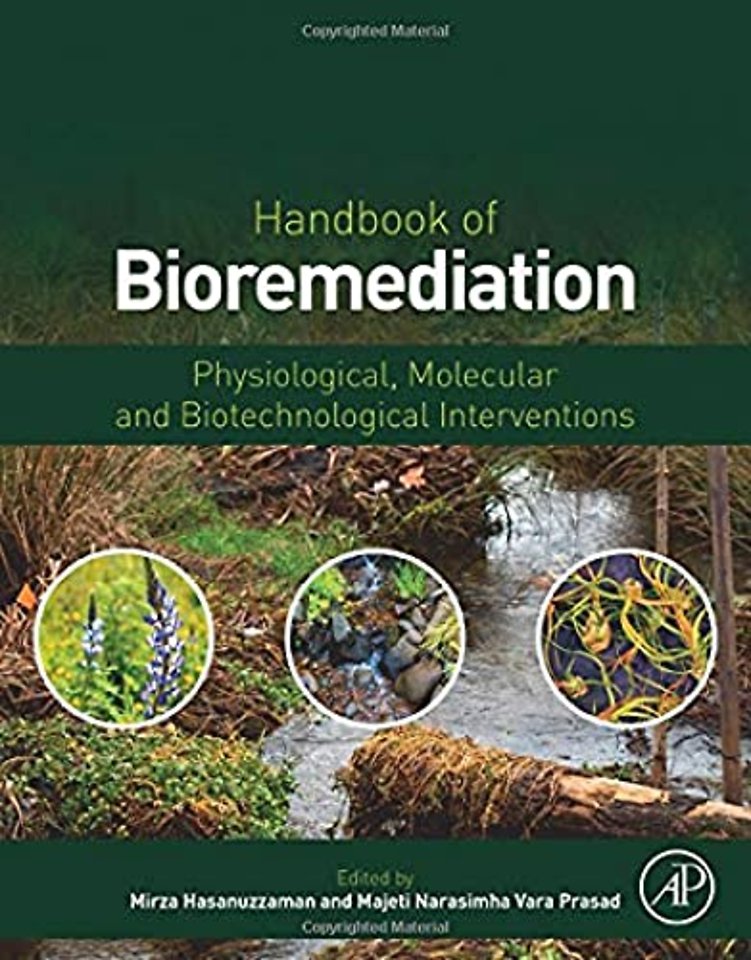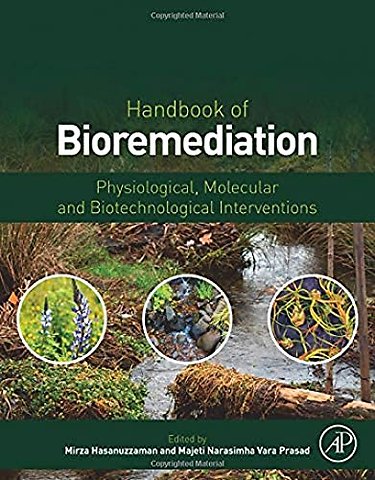<p>1. Concept and types of bioremediation</p> <p>2. The use of industrial and food crops for the rehabilitation of areas contaminated with metal(loid)s: Physiological and molecular mechanisms of tolerance</p> <p>3. Mechanistic overview of metal tolerance in edible plants: A physiological and molecular perspective</p> <p>4. Phytoextraction of heavy metals by weeds: Physiological and molecular intervention</p> <p>5. Phytomanagement of As-contaminated matrix: Physiological and molecular B asses</p> <p>6. Metallothionein-assisted phytoremediation of inorganic pollutants</p> <p>7. Phytochelatins and their relationship with modulation of cadmium tolerance in plants</p> <p>8. Role of glutathione in enhancing metal hyperaccumulation in plants</p> <p>9. Thiol-dependent metal hyperaccumulation and tolerance in plants</p> <p>10. Role of redox system in enhancement of phytoremediation capacity in plants</p> <p>11. Role of reactive nitrogen species in enhancing metal/metalloid tolerance in plants: A basis of phytoremediation</p> <p>12. The antioxidant defense system and bioremediation</p> <p>13. Interplay between selenium and mineral elements to improve plant growth and development</p> <p>14. Physiological basis of arsenic accumulation in aquatic plants</p> <p>15. Alteration of plant physiology by the application of biochar for remediation of metals</p> <p>16. Plant-microbe interaction: Relevance for phytoremediation of heavy metals</p> <p>17. Molecular and cellular changes of arbuscular mycorrhizal fungi-plant interaction in cadmium contamination</p> <p>18. Potential use of efficient resistant plant growth promoting rhizobacteria in biofertilization and phytoremediation of heavy metal contaminated soil</p> <p>19. Ecological and physiological features of metal accumulation of halophytic plants on the White Sea coast</p> <p>20. Role of secondary metabolites in salt and heavy metal stress mitigation by halophytic plants: An overview</p> <p>21. Genetics of metal hyperaccumulation in plants</p> <p>22. Gene regulation in halophytes in conferring salt tolerance</p> <p>23. Recent advances toward exploiting medicinal plants as phytoremediators</p> <p>24. Can plants be considered as phytoremediators for desalination of saline wastewater: A comprehensive review</p> <p>25. Genomics in understanding bioremediation of inorganic pollutants</p> <p>26. Genetic engineering of plants to tolerate toxic metals and metalloids</p> <p>27. Metal-binding proteins and peptides in bioremediation and phytoremediation of heavy metals</p> <p>28. Physiological and molecular basis of bioremediation of micropollutants</p> <p>29. Plant enzymes in metabolism of organic pollutants</p> <p>30. Alteration of plant physiology by the application of biochar for remediation of organic pollutants</p> <p>31. Role of reactive nitrogen species in mitigating organic pollutant–induced plant damages</p> <p>32. Antioxidant defense systems in bioremediation of organic pollutants</p> <p>33. Role of glutathione in enhancing plant tolerance to organic pollutants</p> <p>34. Physiological and molecular basis for remediation of polyaromatic hydrocarbons</p> <p>35. Physiological and molecular basis for remediation of pesticides</p> <p>36. Environmental concerns associated with explosives (HMX, TNT, and RDX), heavy metals and metal(loid)s from shooting range soils: Prevailing issues, leading management practices, and future perspectives</p> <p>37. Physiological and molecular basis of plants tolerance to linear halogenated hydrocarbons</p> <p>38. Molecular basis of plant-microbe interaction in remediating organic pollutants</p> <p>39. Microbial degradation of organic pollutants using indigenous bacterial strains</p> <p>40. Molecular basis of plant-microbe interaction in remediating pesticides</p> <p>41. Molecular and cellular changes of arbuscular mycorrhizal fungi-plant interaction in pesticide contamination</p> <p>42. Biodegradation of explosives by transgenic plants</p> <p>43. Polychlorinated biphenyls (PCBs): Characteristics, toxicity, phytoremediation, and use of transgenic plants for PCBs degradation</p> <p>44. Remediation of organic pollutants by Brassica species</p> <p>45. Bioremediation of organic contaminants based on biowaste composting practices</p> <p>46. Bioremediation of organic dyes using plants</p>

